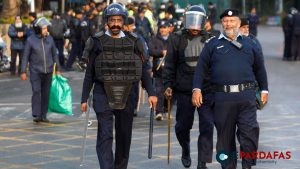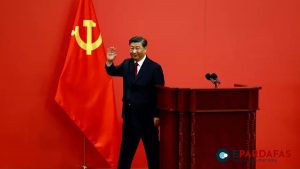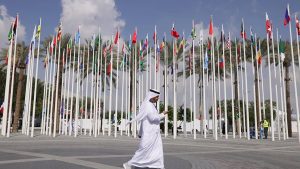
China’s $15 Billion Military Spending on Western Pacific Exercises Reveals Strategic Focus Amid Rising Tensions
In 2023, China allocated approximately $15 billion, or 7% of its total defense budget, to military exercises in the Western Pacific, according to a previously unpublished estimate by Taiwan’s armed forces. This significant expenditure underscores Beijing’s intensified military activities around Taiwan and its neighboring regions, reflecting its strategic priorities amid escalating regional tensions.
The internal research conducted by Taiwan, which was reviewed by Reuters, provides a rare glimpse into a specific aspect of China’s defense spending. Beijing’s military presence has grown substantially, driven by its longstanding claim over Taiwan and its territorial disputes in the South China Sea and East China Sea. Despite Taiwan’s strong objections, China has not ruled out the use of force to bring the democratically governed island under its control.
A senior Taiwanese official, who was briefed on the research, highlighted the strategic implications of China’s spending. “They are spending a huge number of resources trying to gain control of the west of the First Island Chain,” the official said, referring to the arc of archipelagos running from Indonesia to Japan, encompassing the South China Sea and East China Sea.
Taiwan’s defense ministry, while declining to comment on the specific figures, acknowledged that China’s substantial military investment poses a threat to regional peace and stability. “The Chinese Communist Party’s enormous military investment in recent years indeed has a negative impact on the peace and stability in the region, which is not conducive to global prosperity and development,” the ministry stated.
China’s defense ministry did not respond to requests for comment. However, Zhang Youxia, the vice chairman of the Central Military Commission, has previously criticized foreign military presence in the region, warning against “maritime containment” and “island blockades.”
Detailed Assessment of China’s Military Exercises
The Taiwanese report, compiled in May, analyzed Chinese military activities in various strategic areas, including the Bohai Sea, the East China Sea, the Taiwan Strait, the South China Sea, and the broader Western Pacific. The research estimated the costs associated with these exercises, including fuel, maintenance, repairs, and salaries, totaling 110 billion yuan ($15.3 billion). This figure represents about 85% of Taiwan’s 2023 defense budget and 7% of China’s reported 2023 military spending.
China’s official defense budget for 2023 was reported at 1.55 trillion yuan, with a planned increase to 1.67 trillion yuan in 2024. However, experts and diplomats have long noted that China’s defense spending figures are often opaque and may not fully capture all expenditures.
Retired Taiwanese Navy Lieutenant Commander Lu Li-shih remarked on the challenges of deciphering China’s defense budget, likening it to a “black hole.” He noted that while trends in spending can be observed, detailed breakdowns of expenditures remain elusive.
Scope and Scale of Military Activity
China’s military exercises in the Western Pacific have increased significantly in both scale and frequency, although they still lag behind those of the United States in complexity. According to the report, Chinese aircraft, including J-10 fighter jets, H-6 bombers, and drones, conducted over 9,200 flights in the region in 2023, totaling approximately 29,000 hours of flight time. The Chinese navy, meanwhile, carried out more than 70,000 sailings, including those by aircraft carriers and destroyers, amassing over 1.7 million hours at sea.
The distribution of China’s naval activities reveals a strategic focus, with 40% of the journeys occurring in the contested South China Sea, 20% in the East China Sea, and nearly 15% in the Taiwan Strait.
Implications for Taiwan and Regional Stability
Taiwanese officials and experts believe that China’s increasing military activity is a clear indication of its preparation for a potential invasion of Taiwan. The report also suggests that Taiwan is closely monitoring China’s military capabilities to assess the risks and potential gaps between Beijing’s intentions and its actual capabilities.
In addition to the broader military exercises, China has also conducted targeted “punishment” drills around Taiwan. In May 2024, shortly after Taiwanese President Lai Ching-te, whom Beijing considers a separatist, took office, China launched the “Joint Sword – 2024A” war games. During these exercises, Chinese air and naval forces were estimated to have spent around $13.17 million on fuel and consumables alone.
Chieh Chung, a researcher at the Taipei-based Association of Strategic Foresight, noted that China’s military activities are aimed at building combat readiness for a potential Taiwan invasion. “The Communist military is ramping up their training for a Taiwan invasion,” Chung said. “More aircraft and pilots are now capable of conducting such missions.”
China’s substantial investment in military exercises in the Western Pacific underscores its strategic priorities amid rising regional tensions. As Beijing continues to assert its claims over Taiwan and other disputed territories, its military activities have raised concerns about the potential for conflict in the region. Taiwan, along with its regional and global partners, remains vigilant in assessing the implications of China’s growing military presence.













Comments